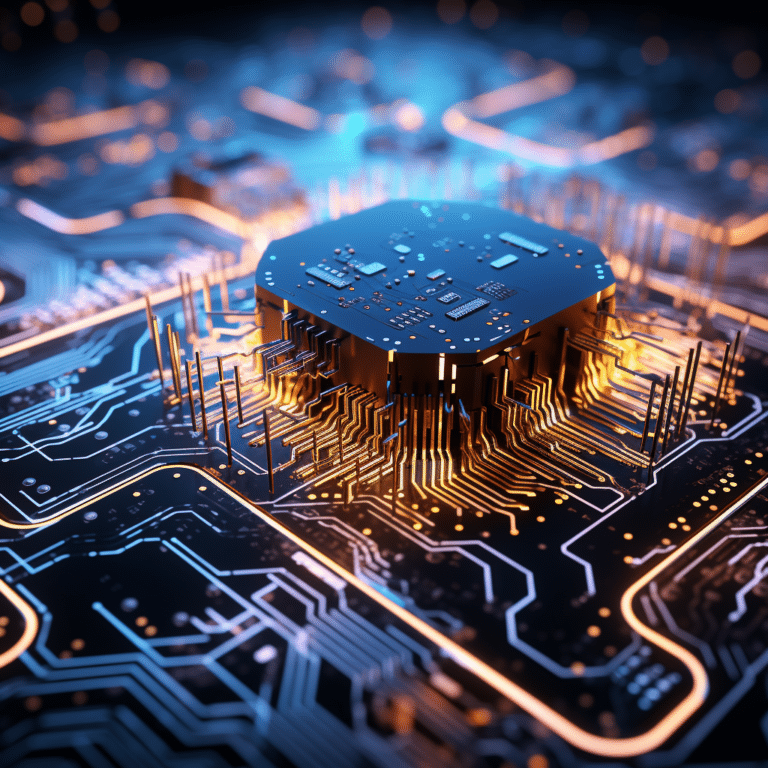In the ceaseless pursuit of artificial intelligence (AI) evolution, energy consumption has stood as a towering barrier, often sidelining the monumental strides in machine learning and data processing. In a remarkable breakthrough from the Max Planck Institute, Germany, neuromorphic computers are being hailed as the harbinger of a new epoch in AI, one where energy efficiency and accelerated training walk hand in hand.
Bridging Efficiencies and Intelligence
The prowess of current AI models like GPT-3, while staggering, shadow a significant concern: the immense energy requirement. A striking metric from Statista elucidates this, attributing a staggering 1000 megawatt hours to the training of GPT-3—translating to the annual energy footprint of 200 substantial German households. But, can a computer model truly fathom the depth of meanings within words and phrases, despite such intensive training?
“The magnitude of energy deployed to tutor AI systems vastly outweighs their ability to comprehend or derive intrinsic meanings within language sequences.”
Unveiling Neuromorphic Computing: The Brain-Machine Symbiosis
The concept of neuromorphic computing departs from traditional artificial neural networks, inviting a paradigm where data processing is conducted in parallel, much akin to human neural synapses acting concurrently as processors and memory units. Florian Marquardt, a pivotal mind at the Max Planck Institute, underscores a palpable bottleneck in contemporary AI:
“The energy guzzled during data shuttling between processors and memory isn’t just significant—it’s a monumental roadblock in training expansive neural networks.”
Reimagining AI Training: The Self-Learning Physical Machine
Marquardt, together with doctoral student Víctor López-Pastor, has been piloting an avant-garde AI training methodology that bypasses traditional roadblocks. Their “self-learning physical machine” isn’t merely a new model but a fundamental reshaping of AI training protocols. This technique foregoes external feedback, honing its parameters through intrinsic physical processes, an approach touted to markedly slash energy and computational demands.
Marquardt elucidates:
“The absence of external feedback doesn’t just streamline training—it injects it with an unprecedented efficiency.”
However, the application of this method isn’t without its stipulations. It demands reversibility to secure minimal energy dissipation and a tangible complexity or non-linearity to perform intricate transformations from input data to final output.
Melding Theory with Tangibility: Practical Neuromorphic Computing
Aligning theoretical prowess with tangible applications, Marquardt and López-Pastor, in tandem with an experimental team, are steering toward actualizing an optical neuromorphic computer. This model would leverage superimposed light waves for information processing, a bid to bring the self-learning physical machine concept into the physical realm.
Expressing optimism, Marquardt anticipates:
“Within a horizon of three years, we aim to unveil the first self-learning physical machine, envisioning networks that not only manage voluminous data but also enable training with more expansive data sets than present systems.”
Conclusion: On the Cusp of an AI Metamorphosis
As the dominion of AI burgeons, the symbiosis between neuromorphic computers and machine learning unveils a path where efficiency and advanced training coalesce. The work of Marquardt and López-Pastor not only provides a beacon of hope amidst the energy concerns hovering over AI development but also heralds a future where AI isn’t merely intelligent but also astutely energy-efficient.
The seamless integration of theory and practice, coupled with the envisioned efficiency in training, marks a pivotal moment in our journey towards truly intelligent and sustainable artificial intelligence. And as we stand on this precipice, one must wonder:
“Are we witnessing not just an evolution, but a revolution, where AI transcends its barriers, merging unparalleled intelligence with unprecedented energy efficiency?”
